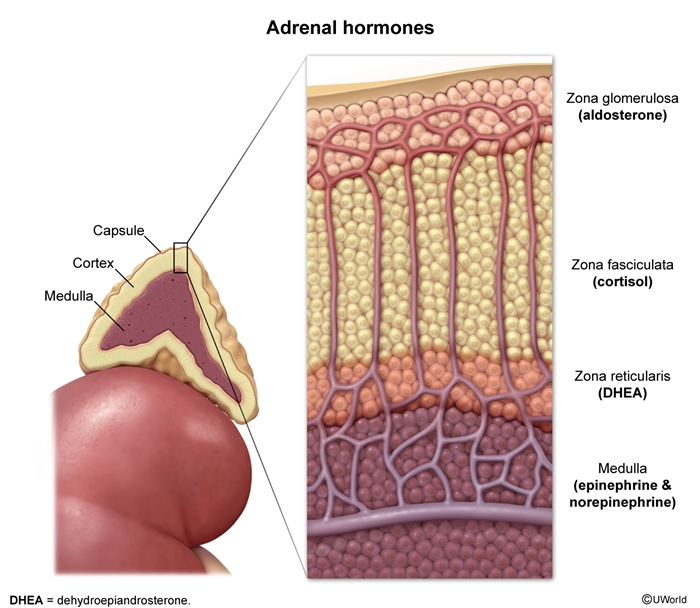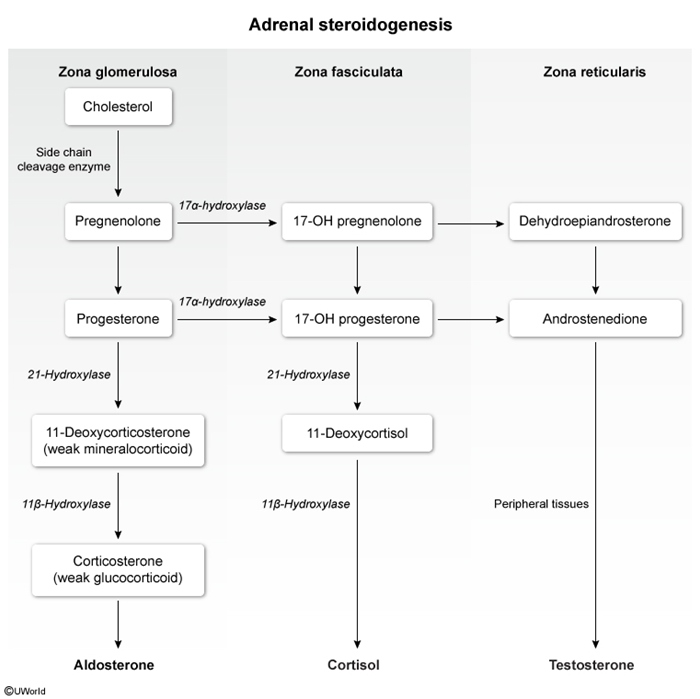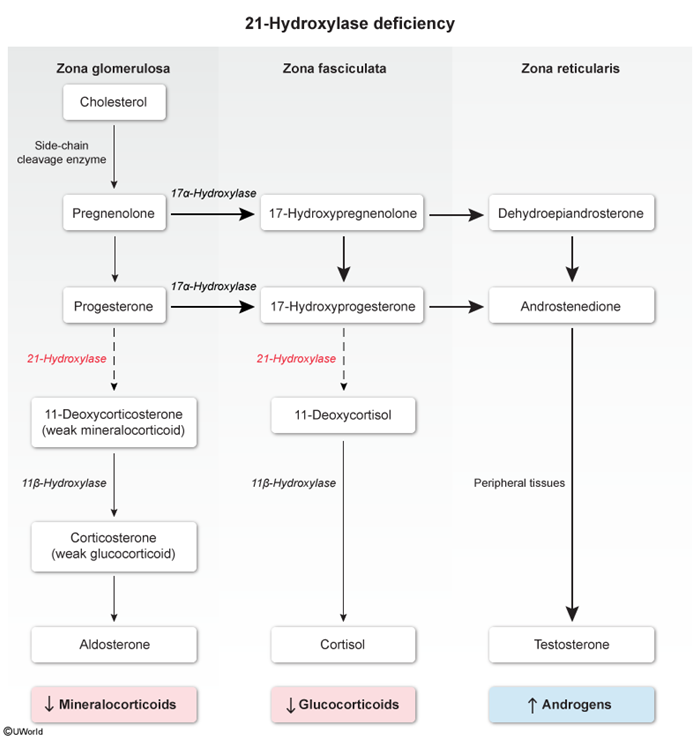Congenital Adrenal Hyperplasia
Article Sections
Introduction
Congenital adrenal hyperplasia (CAH) refers to a group of autosomal recessive genetic disorders characterized by a deficient enzyme (eg, 21-hydroxylase, 11β-hydroxylase, 17α-hydroxylase) in adrenal steroidogenesis.
Adrenal physiology
The adrenal cortex is composed of 3 layers, each of which produces specific hormones (Figure 1):
- Mineralocorticoids (eg, aldosterone): Regulate sodium and water regulation, which affects blood volume and arterial pressure
- Glucocorticoids (eg, cortisol): Mediate the stress response by initiating gluconeogenesis to increase blood glucose, upregulating alpha receptors to increase responsiveness to catecholamines, and suppressessing inflammation
- Androgens (eg, dehydroepiandrosterone [DHEA], androstenedione): Sex hormones that lead to virilization and pubic/axillary hair development
Adrenal steroidogenesis involves several enzymes (Figure 2), and a deficiency in any one of them can impair steroidogenesis; the substrates then accumulate and divert to other pathways. The clinical presentation can vary depending on which enzyme is deficient and the degree of deficiency (ie, complete deficiency causes severe presentations), as discussed below (
Continue Learning with UWorld
Get the full Congenital Adrenal Hyperplasia article plus rich visuals, real-world cases, and in-depth insights from medical experts, all available through the UWorld Medical Library.
Figures



